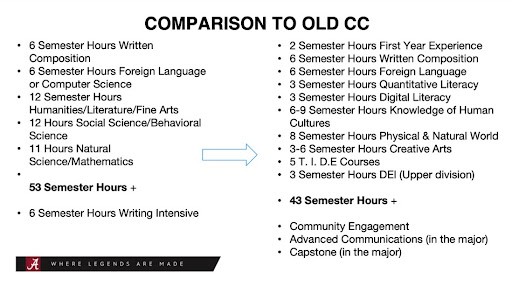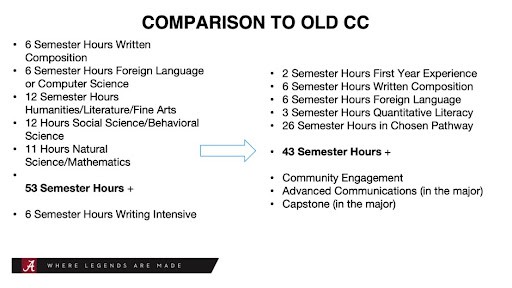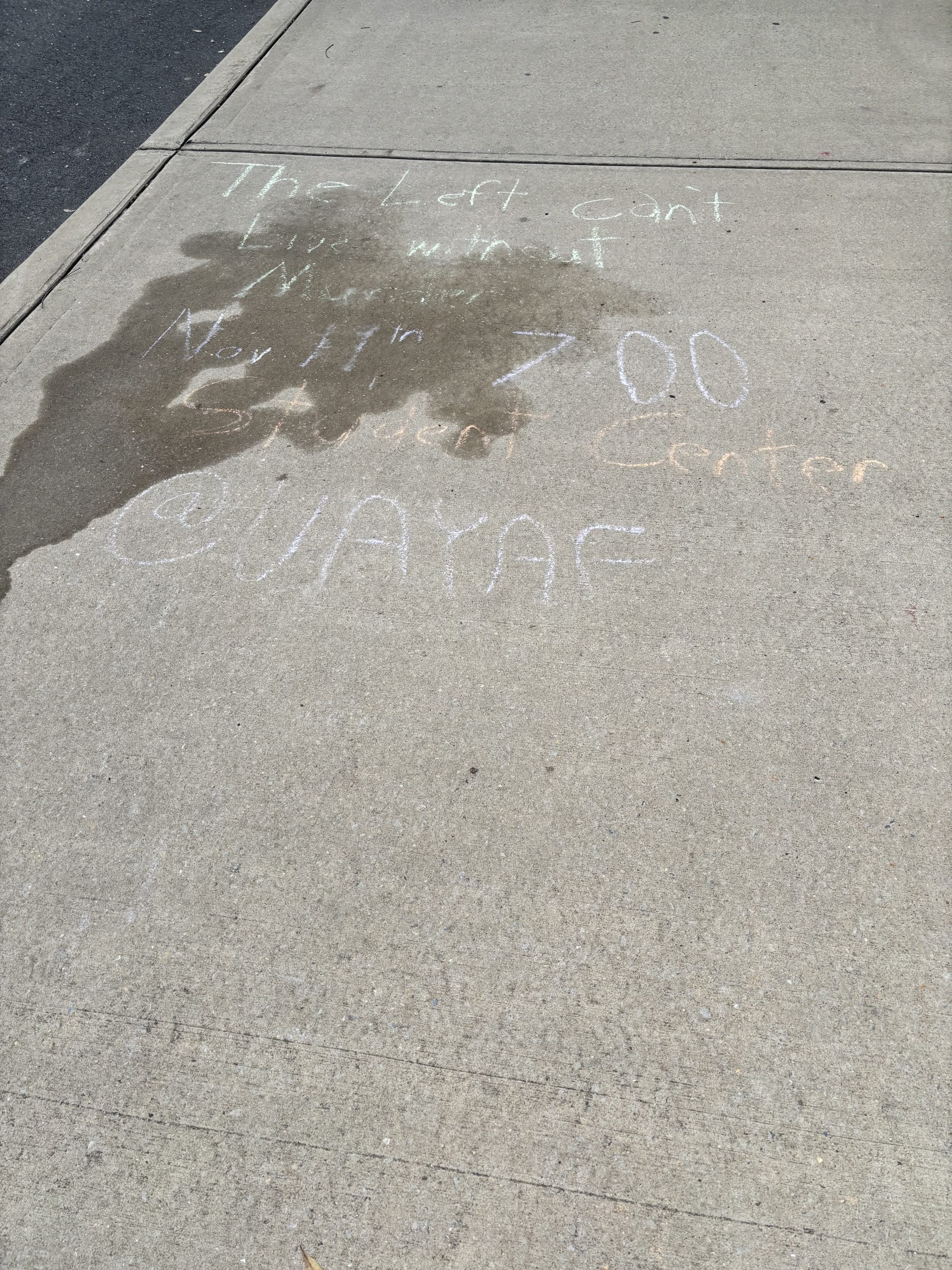Faculty Senate will vote on new general education requirements in October
September 29, 2021
The University of Alabama Faculty Senate is assessing new curriculum models for general education requirements. The Faculty Senate will vote on the two proposed models at its meeting on Oct. 19.
In fall 2018, then-provost Kevin Whitaker formed the General Education Task Force to evaluate the current general education requirements and incorporate skills like communication, teamwork and problem-solving.
“The program challenges students to develop their logical and creative capacities by providing transformational and integrative learning experiences that complement the undergraduate major,” according to the University’s General Education purpose statement.
The task force referenced a much larger, changing student body as the primary reason for changing general education requirements. Both models, the task force believes, will better equip students for future success than the current model does.
The T.I.D.E. Model and the Pathways Model both require a total of 43 credit hours. The current general education model requires 53 credit hours.
Essential Learning + T.I.D.E. Courses Model
The first proposal is the Essential Learning + T.I.D.E. Courses Model, which will include four different sections: Bama Beginnings, Foundations, Essential Learning + T.I.D.E., and High Impact Experiences.
Bama Beginnings, which is included in both proposed models, is two credit hours of required curriculum. The first semester would educate students on the Capstone Creed, and the second semester would focus on the application of the creed. Community engagement will be introduced during this section.
Foundations will require 18 hours of courses, including six hours in written composition, three hours in quantitative or statistic-driven literacy , six hours in foreign language and three hours in digital literacy.
Essential Learning + T.I.D.E. courses will consist of 20 hours of required courses in human cultures, physical and natural world, and creative arts.
Students will be required to take courses in teamwork and problem-solving, inquiry and analysis, digital and information literacy, and ethical reasoning. This will include one T.I.D.E. course from each category, then an extra course from a category of choice.
High Impact Experiences will be three hours that recommend community engagement, diversity, equity and inclusion and advanced communication courses.

Pathways Model
The second model is the Pathways Model, which includes four sections: Bama Beginnings, Foundations, Pathways and High Impact Experiences.
This model aims to better serve minority and first generation students, which University research shows are underserved by the current general education model.
“What a Pathways Model tries to do that the old distribution model does not is it tries to give a coherence to that distribution,” said Erik Peterson, a member of the task force and an associate professor of history. “It tries to say why you have to take these particular courses on the way to getting your degree.”
The Bama Beginnings section is identical in both models. The Pathways Model requires almost the same courses for the Foundations section, with only 15 hours necessary.
The Pathways Model requires 26 semester hours for the pathways section.
“Each pathway has the same set [of requirements] but not the same courses,” Peterson said.
Peterson said the diversity, equity and inclusion class required by both models is unlike current UA course offerings.
He also said that the thing that determines how each pathway is different will be its theme. The task force plans to survey the faculty to pick themes if this model is chosen.
Just like the T.I.D.E. Model, the high-impact practices section requires six semester hours in the student’s major that are classified as advanced communications, three semester hours in a major specific capstone class and a varied number of hours in a community engagement course.

Old CC |
Essential Learning +T.I.D.E. Courses Model |
Pathways Model |
| 6 Semester Hours Written Composition | 2 Semester Hours First Year Experience | 2 Semester Hours First Year Experience |
| 6 Semester Hours Foreign Language or Computer Science | 6 Semester Hours Written Composition | 6 Semester Hours Written Composition |
| 12 Semester Hours Humanities/Literature/Fine Arts | 6 Semester Hours Foreign Language | 6 Semester Hours Foreign Language |
| 12 Hours Social Science/Behavioral Science | 3 Semester Hours Quantitative Literacy | 3 Semester Hours Quantitative Literacy |
| 11 Hours Natural Science/Mathematics | 3 Semester Hours Digital Literacy | 26 Semester Hours in Chosen Pathway |
53 Semester Hours + |
6-9 Semester Hours Knowledge of Human Cultures |
43 Semester Hours + |
| 6 Hours Writing Intensive | 8 Semester Hours Physical and Natural World | Community Engagement |
| 3-6 Semester Hours Creative Arts | Advanced Communications (in the major) | |
| 5 T.I.D.E. Courses | Capstone (in the major) | |
| 3 Semester Hours DEI (Upper Division) | ||
43 Semester Hours + |
||
| Community Engagement | ||
| Advanced Communications (in the major) | ||
| Capstone (in the major) |










